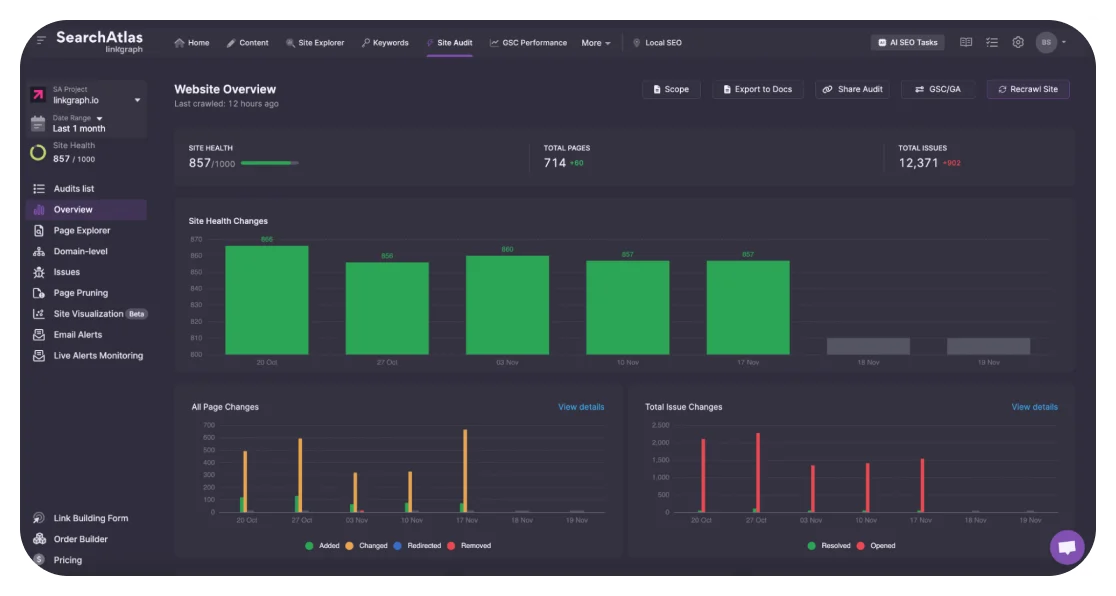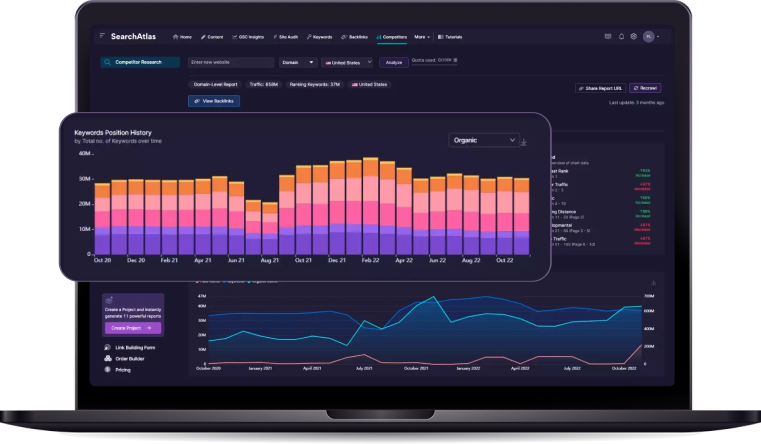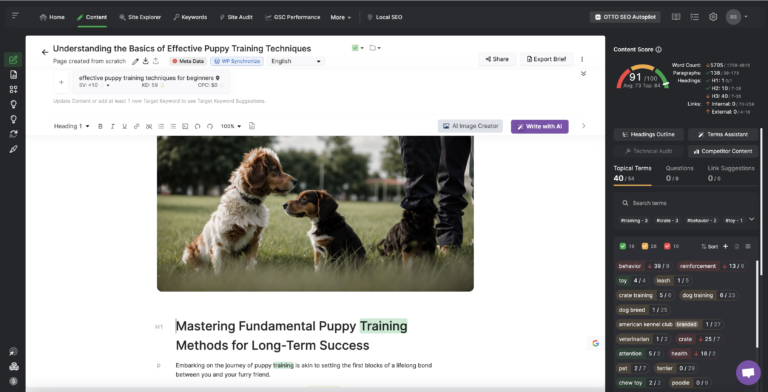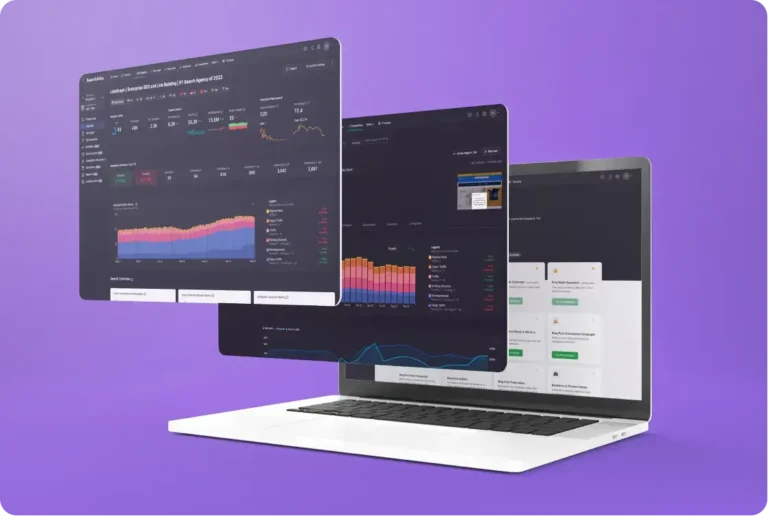Mastering SEO: Essential Guidelines for Optimizing URL Structure
In the vast expanse of the World Wide Web, URLs serve as more than mere web addresses; they are the beacon for both users and search engines to understand and navigate content.
Crafting a URL structure that resonates with SEO best practices can dramatically elevate a site’s visibility and user experience.
It is an intricate dance between technical prowess and strategic keyword placement, ensuring that each web page is both discovered and valued in the crowded search engine results pages.
Marketers, web developers, and content creators alike must grasp the subtleties of URLs that lead to SEO success.
Keep reading to unlock the secrets of optimizing your website’s URL structure for maximum impact.
Key Takeaways
- URL Structure Is a Critical Factor in SEO That Requires Careful Consideration of Each Component for Optimal Search Engine Rankings
- Implementing HTTPS and Managing URL Parameters Effectively Can Improve Both Security and SEO Performance
- Strategic Use of Canonical Tags and Proper Redirection Techniques Can Prevent Content Duplication Issues and Preserve Search Ranking Power
- Multilingual URL Architectures Can Significantly Enhance a Site’s International Reach and Relevance in Regional Search Results
- Regular URL Audits and Analytics Are Essential for Maintaining and Improving a Website’s SEO Health and Performance
Understanding the Anatomy of a Well-Optimized URL

In the realm of Search Engine Optimization (SEO), the URL serves as the digital fingerprint of a web page, holding significant weight in search engine rankings.
The crafting of a URL extends beyond a mere web address; it is a deliberate construction, marrying technical details to user experience.
Professionals in the field understand that each component—from protocol to parameters—plays a pivotal role in asserting the relevance and credibility of the site.
Navigating the complex landscape of good URL construction requires an appreciation for the nuances of URL syntax and a strategic approach to these often-overlooked elements that contribute substantially to a website’s SEO prowess.
Identifying the Key Elements of a URL
In the tapestry of SEO, the URL is less a strand and more a cornerstone, anchoring site architecture and search viability. Experts in digital marketing recognize components such as scheme, host, domain, and path as critical to guiding search engines and users alike through the vast World Wide Web.
Each URL is comprised of a protocol, often illustrated as HTTP or its secure version, HTTPS, followed by the domain name that typically encapsulates the brand or relevant category name. Delving further into the anatomy, the path leads to a specific page or resource—ideally reflecting the content through mindful use of URL keywords and a reader-friendly URL slug:
| URL Component | Description | SEO Significance |
|---|---|---|
| Protocol | Indicates the method of accessing the web server, such as HTTP or HTTPS | Secure Sockets Layer (SSL) certificates and the use of HTTPS can positively influence search ranking |
| Domain Name | The unique identifier that represents the entity or brand, such as ‘example.com’ | Reinforces brand identity and contributes to search engine credibility and recall |
| Path | The specific address structure leading to individual pages or blog posts | Enhances relevance by using target keywords and ensures a transparent hierarchy |
The Importance of URL Syntax for SEO
Within the intricate world of Search Engine Optimization, the syntax of a URL is a potent catalyst for digital visibility. It is not merely about the aesthetics of brevity or readability; the syntax goes hand-in-hand with search engine algorithms that parse this digital address in their quest to rank pages appropriately.
The blueprint for URL optimization hinges on perceptive use of URL structure, often referred to as the ‘permalink’. This structure defines the path and hierarchy of information on a site, providing clear signal paths for search engine crawlers and enhancing finder-point accuracy for users:
| Component | Role in URL | Impact on SEO |
|---|---|---|
| URL Keywords | Keywords integrated in the web address | Direct correlation with increased relevance for target search queries |
| URL Slug | End portion of URL that specifies a particular page | Facilitates better indexing by search engines and improved user experience |
| Hyphens vs. Underscores | Text separators within URL paths | Using hyphens rather than underscores aids search spiders in distinct keyword recognition |
Recognizing the nuances of these interconnected parts propels a site’s SEO success, as every URL serves as a directional arrow, pointing both search engines and searchers to the most relevant destination page, thereby optimizing the chances of a high SERP ranking. Indeed, appropriate URL syntax is not just an element but a cornerstone of judicious search engine optimization strategies.
How URL Components Contribute to SEO
The precision with which URL components are selected and arranged carries substantial weight in the realm of SEO. By incorporating targeted keywords within the path or maintaining a clean, concise permalink structure, marketers enable search engines to glean topic clusters and content relevance, thereby uplifting the site’s visibility on search engine results pages.
A URL can influence user experience, a critical factor in prolonging user engagement and reducing bounce rates. As visitors navigate through a site, a logical and transparent URL format, coupled with consistent permalink structure, cultivates trust and simplifies the journey, potentially enhancing session duration and the likelihood of conversion.
Best Practices for Crafting SEO-Friendly URLs
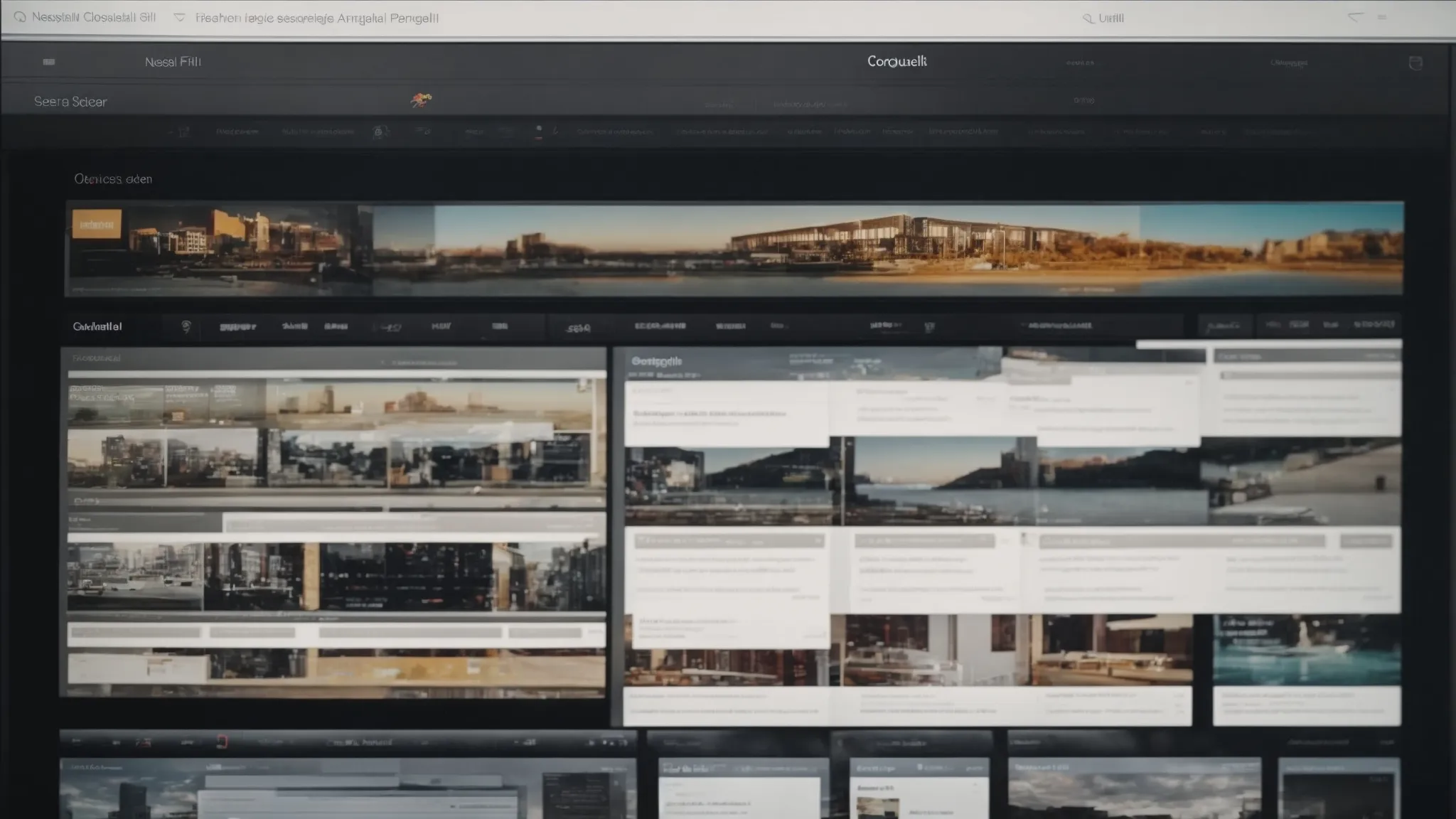
In the intricate craft of search engine optimization, professionals recognize that the subtleties of URL structure play an essential role in elevating a website’s search engine visibility.
As the digital canvas expands, experts emphasize the significance of a clear and purposefully architected URL.
Optimizing web addresses involves more than mere aesthetic appeal; it calls for URL strategies that favor conciseness, descriptiveness, and readability.
From the strategic integration of keywords to the decisive choice between hyphens and underscores, every decision is a calculated step towards SEO ascendancy, ensuring content not only reaches its intended audience but also resonates with the underlying logic of search algorithms.
Keeping URLs Short, Descriptive, and Readable
In the pursuit of SEO mastery, one encounters the critical importance of URL length and clarity. Shorter URLs enhance memorability and reduce complexity for users, thereby aiding in direct navigation and recall.
- Begin with a clear, user-friendly website URL that conveys content at a glance.
- Avoid overloading the URL with parameters or unnecessary words that clutter and confound.
- Opt for descriptive terms that align closely with the page content and target keyword.
Considering readability, one must ensure that URLs remain intuitive and semantically transparent. Effortlessly scannable URLs guide the user seamlessly, fostering a frictionless user experience that complements the site’s content and architecture.
The Role of Keywords in URL Optimization
The strategic insertion of keywords within a URL serves a dual purpose; it aids search engines in discerning the page’s content while simultaneously providing users with an immediate context for the page subject. This practice, a critical component of URL optimization, leverages the power of targeted language to enhance a site’s relevance for specific search queries.
While embedding pertinent keywords into the URL structure bolsters domain authority and informs a site’s content categorization, Search Atlas professionals advocate for judicious use. Overuse or improper keyword stuffing in URLs can be counterproductive, resulting in diluted focus or even triggering search engine penalties, thus emphasizing the importance of balance and precision in SEO efforts.
Using Hyphens vs. Underscores in URLs
In the nuanced arena of SEO, the seemingly minute details, such as the choice between hyphens and underscores, have significant implications for the URL’s efficacy. Search Atlas professionals abide by best practices, advocating for the use of hyphens to separate words within a URL, as search engines like Google interpret them as spaces. This distinction aids in the correct parsing and understanding of content, optimizing the web address for better search engine ranking.
Conversely, underscores within URLs, though occasionally employed by web developers, are generally not recommended from an SEO viewpoint. The use of underscores is understood as a unifier by search algorithms, which may amalgamate separate terms into a single string, undermining the precision of keyword targeting. Therefore, for clarity and optimization, hyphens are preferred to ensure that each term within the URL contributes distinctly to the site’s relevance for specific search queries.
The Impact of HTTPS on URL Optimization

In an era where security is paramount, websites are increasingly adopting HTTPS to protect user data and instill confidence among visitors.
The transition from HTTP to HTTPS is not a mere nod to security trends but brings with it significant SEO advantages.
Search engines favor sites that prioritize user safety, often rewarding them with higher rankings on search engine results pages.
Recognizing this, businesses, and marketers systematize the move to secure sockets layer (SSL) certificates, melding user trust with optimization efforts to vault their URL prominence within the competitive digital marketplace.
Why Secure URLs Matter for SEO
Search engines signal their preference for security by bestowing favorable rankings to URLs prefixed with HTTPS versus their HTTP counterparts. This allegiance to secured data transfer channels underscores the necessity for secure URLs in executing effective SEO strategies.
By deploying SSL certificates, marketers and website administrators not only protect visitor data but also elevate their credibility in the eyes of search engines. Secure URLs thus act as keystones in the bridge linking enhanced security measures with SEO advancement.
| Aspect | Impact on SEO |
|---|---|
| HTTPS Encryption | Endorses a secure exchange of information, contributing to positive search engine evaluations. |
| SSL Certificate | Bolsters user trust and certifies a site’s authenticity, factors that search engines reward with improved rankings. |
Transitioning From HTTP to HTTPS
The migration from HTTP to HTTPS represents a fundamental shift toward a secure web, an initiative that resonates with the directives of modern search engines prioritizing confidentiality. This transition not only shields data integrity but also serves as a hallmark of a trustworthy site, a feature that is increasingly factored into search engine algorithms’ assessment of a site’s quality and reliability.
Implementing HTTPS imbues a URL with an added layer of authentication, encouraging search engines to regard the website with a degree of preference when indexing. Savvy marketers and webmasters recognize this protocol upgrade as a critical, strategic move aimed at bolstering their online presence and fortifying the SEO backbone of their digital properties.
Navigating the Challenges of Dynamic URLs

Dynamic URLs, often laden with parameters and session IDs, are a testament to the adaptive and interactive nature of modern websites.
From tracking user engagements to delivering tailored content, the functionality dynamic URLs provide is indispensable for many web applications.
However, they introduce unique complexities for search engines and SEO specialists aiming to optimize site visibility.
Mastering the balance between dynamic and static URL use, along with the effective management of URL parameters, becomes imperative for streamlining crawler access and enhancing a site’s search engine presence.
This primer serves as a guide through the intricate considerations of dynamic URLs and bestows essential tips for harnessing their potential without compromising Search Atlas’s acclaimed SEO excellence.
When to Use Static vs. Dynamic URLs
The decision to employ static or dynamic URLs hinges upon the specific needs and technical demands of a website. Static URLs, characterized by their unchanging nature, are a stronghold of canonical URLs, often delivering a cleaner, more user-friendly appearance that is easier for search engines to index and for users to comprehend.
Dynamic URLs, generated often in response to user actions or when content is pulled from a database, become valuable in tailored and interactive user experiences, such as e-commerce platforms where user sessions and preferences shape for the content presented. Despite potential complexities, with mindful management, they too can be aligned with SEO best practices:
| URL Type | Typical Use Case | SEO Considerations |
|---|---|---|
| Static | Serving evergreen content and cornerstone pages. | Favors indexing and simplicity for users and search engine crawlers. |
| Dynamic | Interactivity and content personalization, such as in e-commerce. | Requires careful maintenance to avoid URL bloat and preserve SEO integrity. |
Tips for Optimizing Dynamic URL Parameters
To mitigate the potential pitfalls of dynamic URLs, a focused effort on parameter optimization is paramount. The first step involves discerning which parameters are indispensable for user experience or tracking purposes, and systematically eliminating or consolidating those that are superfluous to streamline the URL and facilitate cleaner indexing by search engines.
Employing strategic measures such as the implementation of canonical URLs can markedly reduce the ambiguity of similar content, directing crawlers to the most authoritative version of a page. This targeted approach pre-empts the dilution of link equity across multiple URL parameters, thereby consolidating a site’s SEO efforts:
- Assess and prune non-essential parameters from the URL.
- Adopt canonical tags to unify duplicate content variants under a primary URL.
In addition, judicious use of the robots.txt file and meta robots tags can guide search engines to skip designated URLs, preventing redundant pages from consuming crawl budget and cluttering search engine result pages. Smart use of these tools formulates a robust SEO defense against the complexities dynamic URLs can introduce.
The Dos and Don’ts of URL Redirection

As professionals navigate the nuanced landscape of search engine optimization, the proper application of URL redirection emerges as a pivotal facet of their expansive toolkit.
Mastering the distinction between 301 and 302 redirects is crucial for preserving search engine rankings and ensuring a seamless user experience.
This section delves into strategic management of these redirects, steering clear of the pitfalls that can undermine a site’s online presence.
Recognizing the intricacies of redirection is not merely a technical task but a cornerstone for sustained SEO success, as even inadvertent missteps can ripple into significant impediments in a website’s performance.
Managing 301 and 302 Redirects Properly
In the meticulous craft of search engine optimization, the strategic deployment of 301 and 302 redirects forms a crucial bridge between old and new content destinations. A 301 redirect, often referred to as a permanent redirect, signals to search engines that a page has moved to a new location permanently, thereby transferring the majority of search engine ranking power to the new URL.
Conversely, the use of a 302 redirect indicates a temporary change, suggesting that the original URL will be reinstated in the future. It is imperative that marketers apply 302 redirects judiciously to prevent confusing search engines and diluting SEO value—a misstep which can inadvertently sidetrack the user and compromise the website’s visibility in search results.
Avoiding Common Mistakes in URL Redirection
Understanding redirection nuances prevents the squandering of SEO gains. Marketers must recognize that improper use of 302 redirects for content that has moved permanently can be detrimental, as it may result in search engines retaining the old page in their index, siphoning potential traffic away from the intended destination. In this regard, accuracy in redirect application is not merely advisable; it is critical.
Experts also caution against excessive redirect chains where multiple redirections occur in sequence, which can slow down page loading times and disrupt the user experience. Ensuring that redirects lead directly to the final content prevents confusion for both the visitor and the search engine, thereby maintaining a site’s authority and relevance in search results.
Implementing Canonical URLs to Avoid Duplicate Content

In the intricate dance of search engine optimization, the role of canonical URLs stands out as a critical maneuver for sidestepping the duplicate content quandary, ensuring content value isn’t diluted across multiple URLs.
Central to this strategy is the canonical tag, a key signal to search engines, clarifying which variations of similar pages are paramount for indexing.
The implementation of these canonical references not only fortifies a site’s SEO standing but also cements its position in the fiercely competitive digital landscape.
Identifying the primary version of a content piece, the tag speaks to search engines with clarity, safeguarding the site’s hard-earned rank in the search engine results pages (SERPs) against the potentially erosive effects of content replication.
Understanding the Canonical Tag
The canonical tag, a vital instrument in the SEO toolkit, functions as a directive for search engines to understand and index the preferred version of a web page. Employed within the HTML of a page, this tag provides a clear reference to the original content source, effectively eliminating confusion among similar pages and streamlining indexing efforts.
As an authoritative signal, the canonical tag aids marketers in preserving the equity of the primary page, ensuring that all links and ranking metrics point to the selected URL. Its judicious implementation reinforces a website’s thematic structure and consistency, bolstering the foundation for a formidable online presence.
The Significance of Canonical URLs in SEO
The implementation of canonical URLs in SEO strategies is one of the most significant steps in safeguarding the uniqueness of content across various web pages. By directing search engines to the definitive version of a page, canonical tags prevent the diffusion of link equity and authority among multiple, similar pages, thereby maintaining a site’s rightful place in the SERPs.
Canonical URLs play a crucial role in the organization and presentation of content, ensuring that search engines can identify and rank the most relevant page accurately. This alignment of content under a single URL streamlines the user experience, providing clear navigation paths and simplifying access to the information they seek.
| SEO Challenge | Canonical URL Solution | Outcome for SEO |
|---|---|---|
| Duplicate Content Issues | Specifies the preferred URL for content that appears in multiple locations | Preserves the search ranking potential of content and avoids penalties for duplication |
| Mixed Signal to Search Engines | Highlights the most authoritative version for indexing | Enhances content visibility and strengthens the relevance of search queries |
Structuring URLs for Multilingual Websites

With the World Wide Web transcending geographical borders, creating and maintaining multilingual websites has become indispensable for global reach.
As brands and businesses vie for the attention of diverse audiences, the URL structure takes on added importance—serving as both a navigator and communicator of content’s language specificity.
Professionals skilled in the nuances of SEO recognize that a meticulously organized multilingual URL architecture can significantly enhance a site’s appeal to international searchers.
In addressing the complexities of catering to a global audience, these specialists employ strategic URL configurations to ensure linguistic clarity and cultural relevance, thus optimizing the website for both local and international SERPs.
Strategies for Organizing Multilingual URL Structures
Creating an intuitive URL structure for multilingual websites is a sophisticated endeavor that amplifies a brand’s international reach and resonance. Industry professionals emphasize the need to consistently apply language parameters or dedicated subdirectories to signal content variation to both users and search engines, thus facilitating targeted indexation and enhancing global user experience.
Experts often recommend employing either country-code top-level domains (ccTLDs) or a single, generic top-level domain (gTLD) with language-specific subdirectories or subdomains to segregate content by language. This strategic differentiation helps to clarify site hierarchy for search engines, potentially boosting local search visibility while maintaining a cohesive brand presence across diverse linguistic landscapes.
SEO Considerations for Global Audiences
As brands cultivate their online presence for international audiences, the contours of their URL strategy become vitally important, transcending straightforward translation to embody the multifaceted nature of global SEO. Purposeful URL development, which incorporates localized keyword research and cultural nuance, can significantly affect a site’s relevance and performance in regional search engine results pages.
Stakeholders in the digital arena acknowledge the profound influence that the right URL structure can have on a multinational platform’s searchability. Carefully curated to resonate with the search habits and preferences of a diverse user base, these URL practices ensure consistent and clear communication of a site’s linguistic and regional alignment, positioning it for an optimal presence across the widening spectrum of the global market.
Monitoring and Maintaining URL Performance

In the fast-paced world of digital marketing, vigilance over URL health and search engine standings is non-negotiable.
Masterful SEO practitioners are acutely aware that the potency of a URL is not set in stone; it requires ongoing scrutiny and refinement.
Leveraging sophisticated analytics tools, they meticulously track URL performance, gleaning insights that guide strategic adjustments.
Furthermore, they champion the integration of regular URL audits into comprehensive SEO strategies, comprehending that enduring visibility hinges on the proactive identification and resolution of issues that could otherwise impede a website’s search engine ascent.
Tools for Tracking URL Health and Rankings
Professionals acknowledge the power of analytics in forging the path for SEO triumph, recognizing that robust tools for tracking URL performance are indispensable. Search Atlas equips marketers and SEO experts with an array of instruments, including the SEO Content Assistant and Site Explorer, allowing for detailed examination of URL health and rankings, pinpointing areas ripe for improvement.
These analytical tools serve as the linchpin for strategic adaptations, offering real-time data on metrics such as click depth, site explorer results, and backlink profiles. With these insights, SEO practitioners can engage in proactive monitoring and continuous optimization, ensuring their websites maintain stellar performance in the face of ever-evolving search engine algorithms.
Regular URL Audits as Part of SEO Strategy
Regular URL audits have become a cornerstone of sophisticated SEO strategies. These evaluations, conducted periodically, ensure that a website’s address structure adheres to SEO best practices, identifying any aspect that might impede search engine performance.
An audit verifies the accuracy and efficiency of URL redirects, analyses the utilization of canonical tags, and reviews the overall URL structure for consistency and optimization. These detailed assessments allow for the early detection and rectification of issues, fortifying a website’s standing in the SERPs:
- Conduct thorough inspections of URL redirects to ensure proper usage and application.
- Analyze adherence to canonical tag best practices to prevent duplicate content penalties.
- Assess URL structures for potential improvements in consistency and optimization.
Incorporating these audits into routine SEO maintenance empowers webmasters and marketers to maintain and enhance a site’s navigability and indexation. This practice facilitates peak SEO performance, translating directly to improved organic search visibility and user experience.
Conclusion
In conclusion, mastering the art of SEO through optimized URL structure is paramount for enhancing a website’s visibility and user experience.
Secure, concise, and keyword-rich URLs aid search engines in identifying and ranking content effectively, leading to higher search engine results page standings.
Implementing HTTPS and wisely using redirects and canonical tags protect and clarify content value.
For global reach, strategizing multilingual URL structures is critical.
Regular audits and health checks, supported by advanced tools, ensure URLs remain potent and SEO strategies adjust to the ever-changing demands of search engines.
Ultimately, a well-optimized URL is a critical component of a successful SEO strategy and should be approached with the utmost precision and care.
